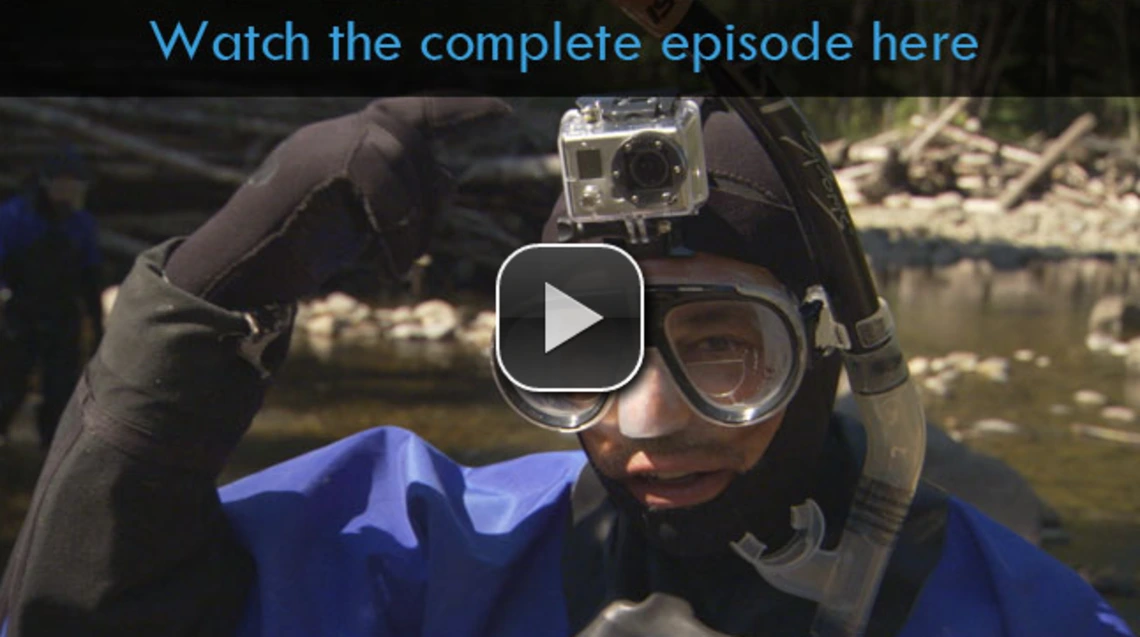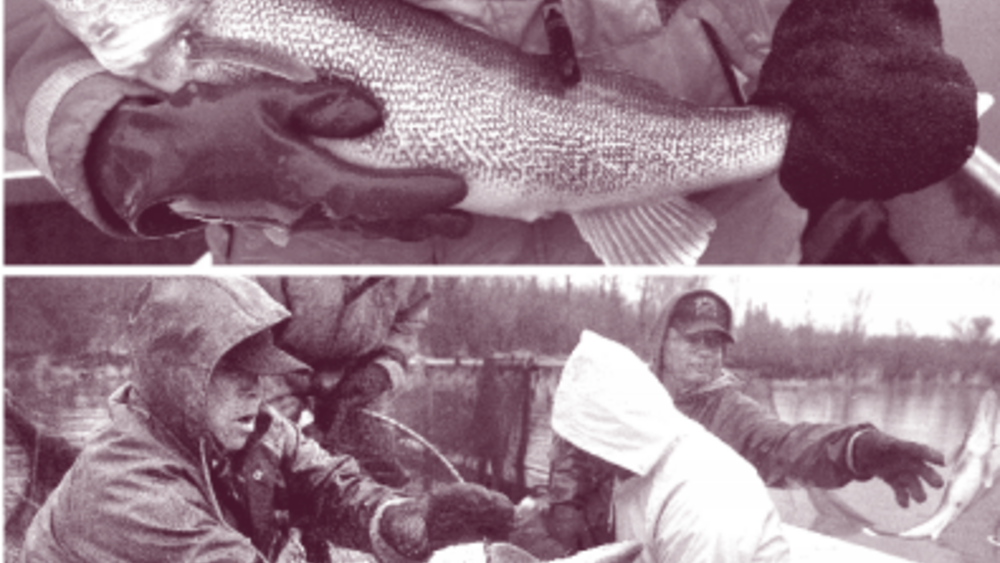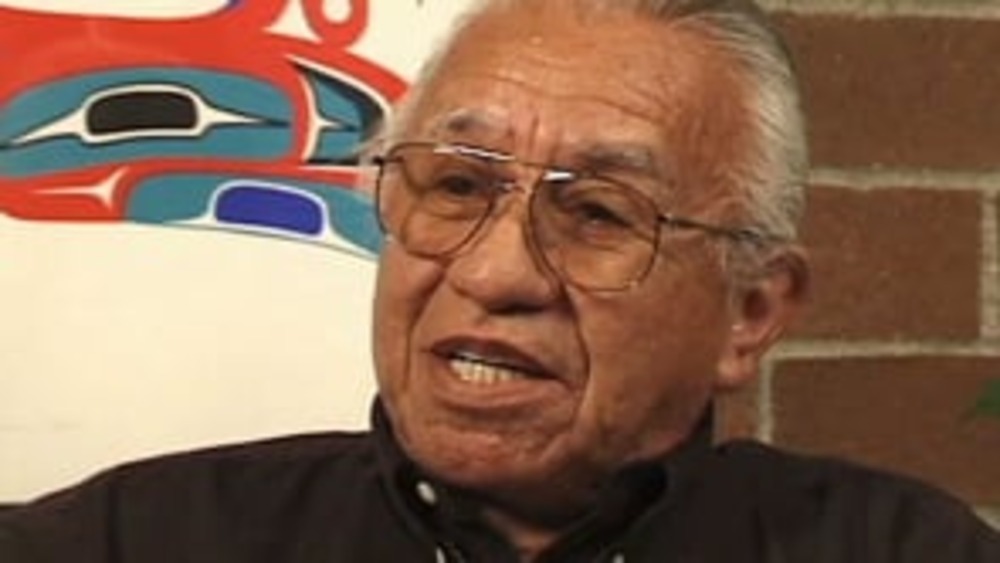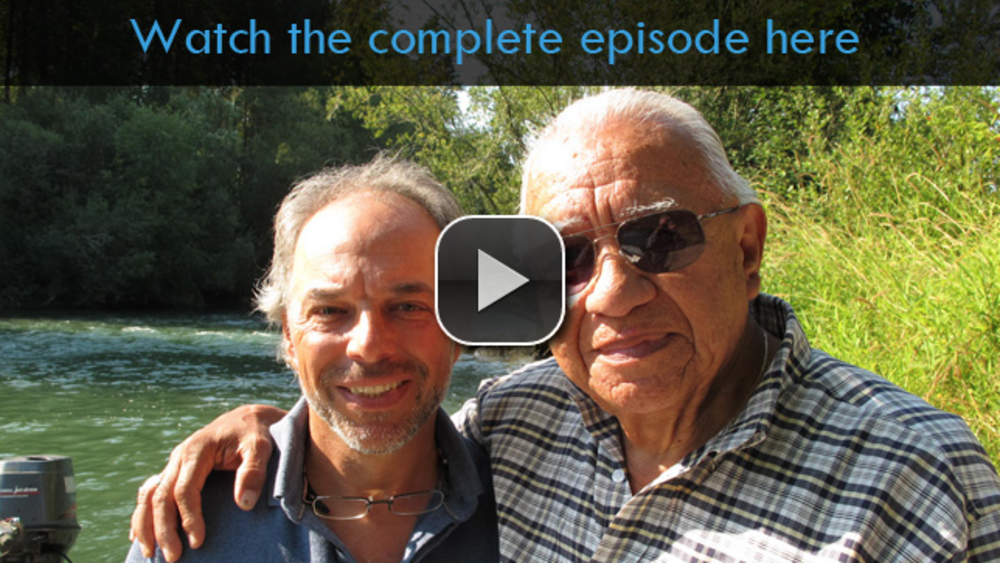An unusual coalition of tribal leaders, private partners and government agencies is working to restore Washington's Nisqually River from its source in the glaciers of Mount Rainier to the estuary that empties into Puget Sound. Led by the Nisqually tribe, the restoration aims to fill the river once again with abundant, magnificent wild salmon. New documentaries in the Saving the Ocean series by filmmakers Chedd-Angier and hosted by renowned scientist Carl Safina track the progress of the Nisqually and their top salmon advocate, Billy Frank Jr.
For millennia, the Nisqually Indians relied on Chinook salmon caught in the Nisqually River. Now the river's wild Chinook are extinct and the tribe runs a hatchery to keep their fishery going. But an unusual coalition of tribal leaders, private partners and government agencies is working to restore the river from top to bottom, from its source in the glaciers of Mount Rainier to the estuary that empties into Puget Sound. Led by the Nisqually tribe, the restoration aims to fill the river once again with abundant, magnificent wild salmon.
In the restoration, urban rain gardens filter runoff and augment river flow, new logjams deepen and cool its waters, and farms returned to marshland provide new places for young salmon to shelter and grow. In a 2-part special, Carl Safina meets the tribal leaders who inspired this grand vision of restoration, which has its roots in the native fishing rights campaigns of the 1960s; and our cameras discover some of the first wild Chinook salmon, descended miraculously from hatchery stock, now beginning to re-populate the Nisqually's pristine spawning grounds.
Additional Information
"River of Kings, Part 2." Saving the Ocean with Carl Safina. The Chedd-Angier Production Company. Boston, Massachusetts. Premiered on PBS November 15, 2012. (http://chedd-angier.com/savingtheocean/Season1/Episode6.html, accessed November 6, 2023)




